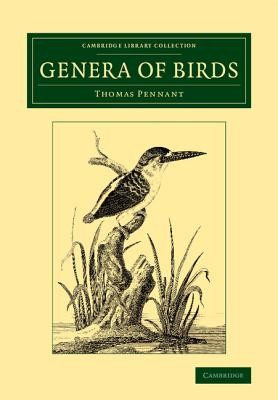
- We will send in 10–14 business days.
- Author: Thomas Pennant
- Publisher: Cambridge University Press
- ISBN-10: 1108067786
- ISBN-13: 9781108067782
- Format: 17 x 24.4 x 0.7 cm, softcover
- Language: English
- SAVE -10% with code: EXTRA
Reviews
Description
The naturalist and traveller Thomas Pennant (1726-98) helped popularise British ornithology by meticulously compiling and arranging existing research. At the age of twelve, Pennant had been given Francis Willughby's Ornithology (1678), to which he credited his lifelong love of natural history. His own writings on ornithology are heavily based on the classification system devised by Willughby and John Ray, which divides birds primarily into land birds and waterfowl. Although Pennant's brief, accessible book brought few original insights to the field, it boosted public interest in the study and classification of birds. The detailed descriptions of the appearance and habits of each bird are enlivened by the author's elegant turns of phrase. This better-known 1781 version of the 1773 original includes fifteen fine engravings. Pennant's other zoological works include Arctic Zoology (1784-5) and his History of Quadrupeds (third edition, 1793), both of which are reissued in this series.
EXTRA 10 % discount with code: EXTRA
The promotion ends in 17d.20:40:53
The discount code is valid when purchasing from 10 €. Discounts do not stack.
- Author: Thomas Pennant
- Publisher: Cambridge University Press
- ISBN-10: 1108067786
- ISBN-13: 9781108067782
- Format: 17 x 24.4 x 0.7 cm, softcover
- Language: English English
The naturalist and traveller Thomas Pennant (1726-98) helped popularise British ornithology by meticulously compiling and arranging existing research. At the age of twelve, Pennant had been given Francis Willughby's Ornithology (1678), to which he credited his lifelong love of natural history. His own writings on ornithology are heavily based on the classification system devised by Willughby and John Ray, which divides birds primarily into land birds and waterfowl. Although Pennant's brief, accessible book brought few original insights to the field, it boosted public interest in the study and classification of birds. The detailed descriptions of the appearance and habits of each bird are enlivened by the author's elegant turns of phrase. This better-known 1781 version of the 1773 original includes fifteen fine engravings. Pennant's other zoological works include Arctic Zoology (1784-5) and his History of Quadrupeds (third edition, 1793), both of which are reissued in this series.


Reviews